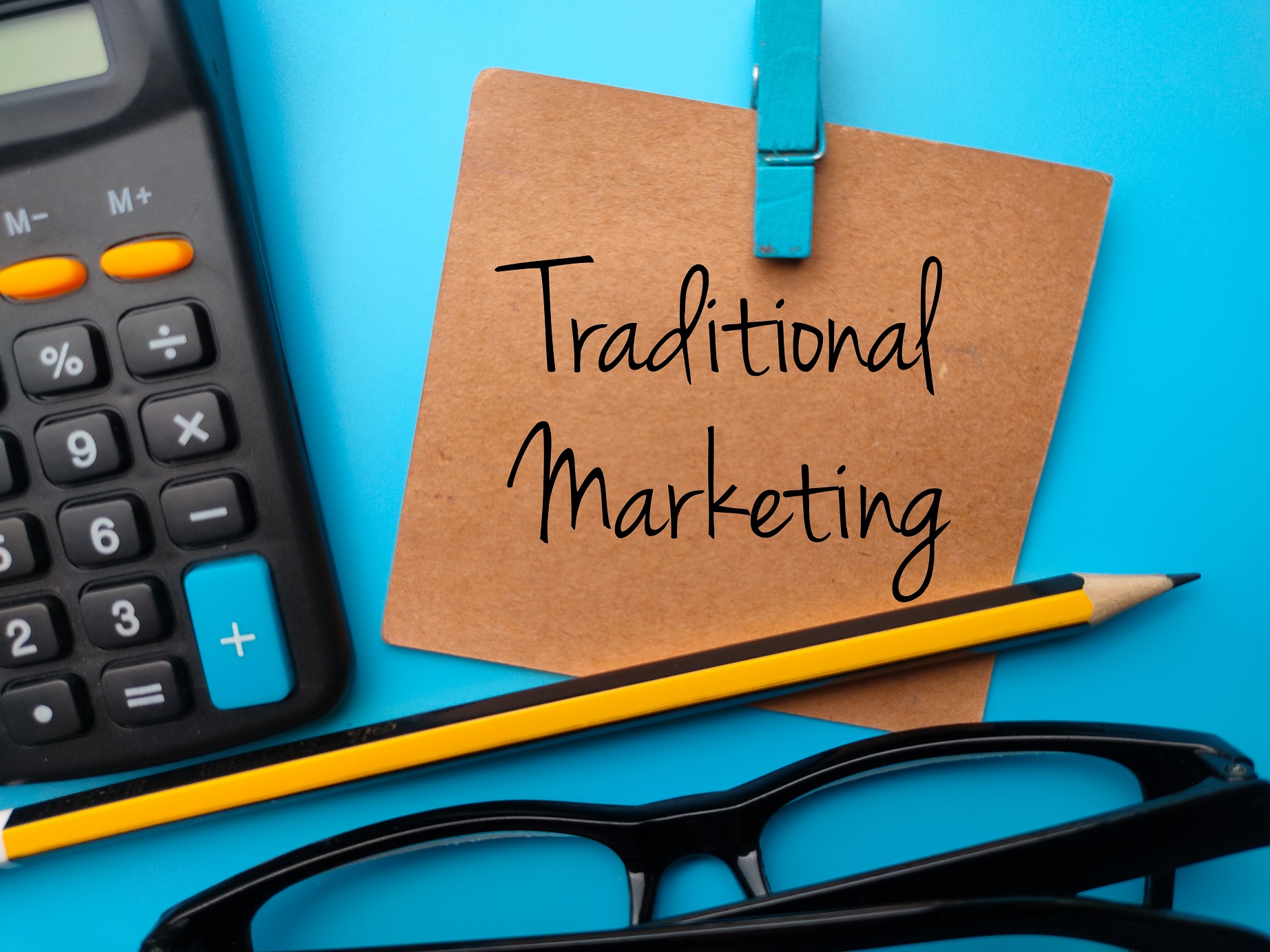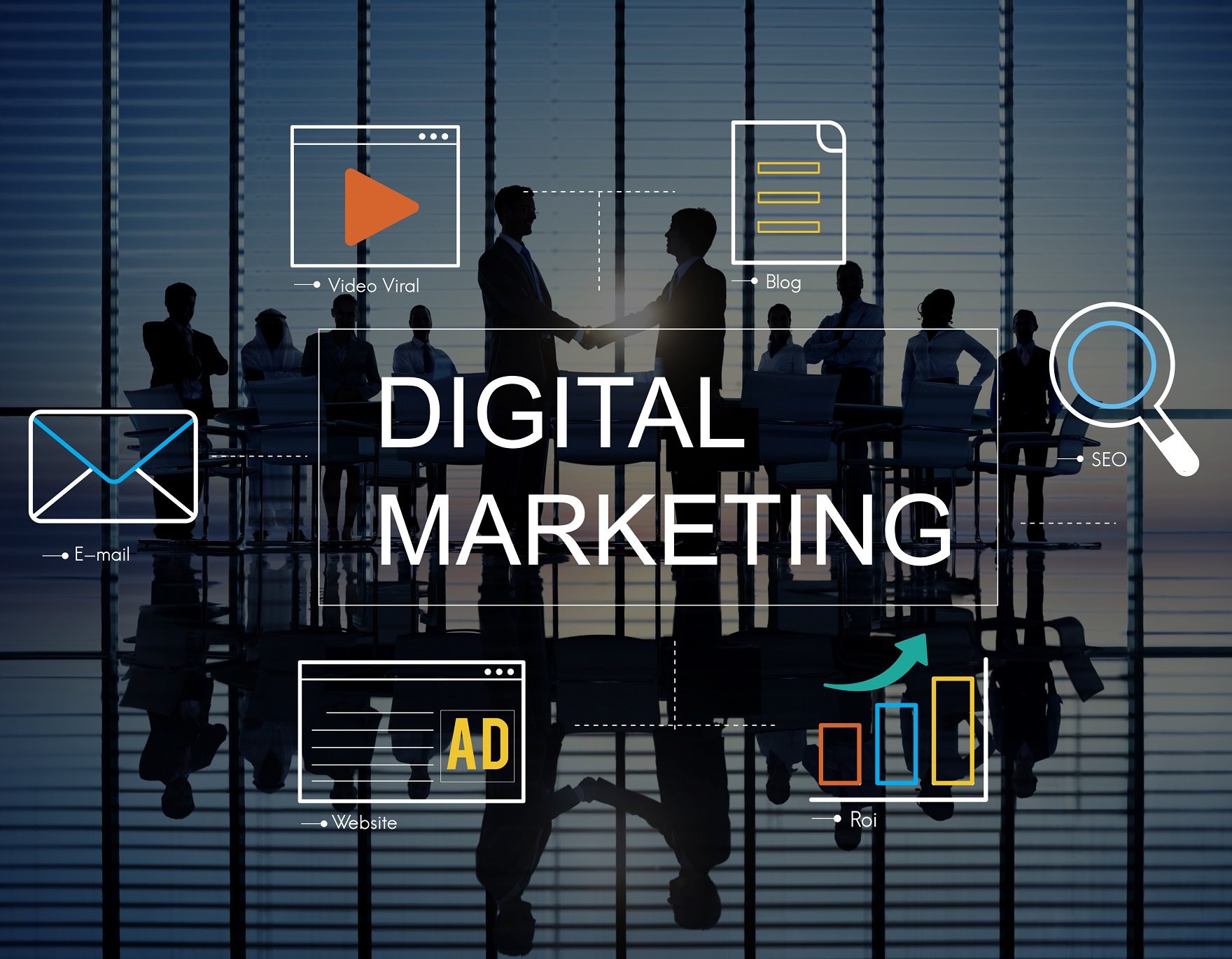

Fierce competition has made it even more crucial for today’s marketers to learn the right ranges of the conventional advertising techniques and the new media. In light of this, when digital marketing is expected to make up of more than 60% of total media ad spend by 2024, it is evident that more businesses are moving online. However, this shift should not be confused for the fact that the conventional methods of promoting a brand are not effective at all. However, there is still a great importance in traditional marketing techniques, which target potentially larger grupos of people or those audiences less involved with new technologies or internet usage. In this article we will consider a closer look at the pros and cons of digital marketing and traditional marketing, differences, and reasons that the combination might change your business to the better.

Conventional marketing is the marketing that has been in
practice for the last few decades. These are television
commercials, radio and print media advertisements, newspapers
and magazines, billboards, direct mail and events such as
trade fairs and seminars.
The most important advantage of traditional marketing is the
coverage of a large number of people. For example, placing a
TV commercial during prime time means that millions of people
will be able to see it, which is why it is used to increase
brand recognition. Traditional marketing is also very much
concrete. A person can pick a brochure, read through a
magazine ad or even see a billboard while going to work. This
kind of touch can create a long-lasting impression that some
of the online marketing techniques fail to create. Also,
conventional forms of advertising are known to be credible and
trustworthy, which can go a long way in gaining consumer
confidence.
However, traditional marketing has its drawbacks as follows;
First of all, it is necessary to mention the cost factor. It
is often very expensive to create a TV commercial or place an
advert in a well circulated magazine for instance for small
businesses. Also, traditional marketing is not as easy to
quantify as some of the other forms of marketing. This is
unlike the digital marketing where you can be able to see the
number of clicks, conversion rate, and engagement in
real-time, but with billboards or print ads, it is quite
challenging to determine their effectiveness. Was that radio
spot really effective in increasing the sales or was it just a
mere interference? This makes it difficult to quantify the
return on investment (ROI) accurately because the measurements
are not very exact.
Take for example the “Got Milk?” which was a famous print ad
series that mainly used celebrities with milk moustache. This
campaign turned into a cultural reference and helped increase
the sales of milk dramatically, proving the effectiveness of
traditional marketing approach. Another example is the
Coca-Cola’s holiday TV advertisements which include the polar
bears. These ads have now become associated with the festive
season thus helping to remind the public of Coca-Cola.
Traditional marketing is most suitable to companies that target the older generation or those products and services that need a local touch. For instance, a bakery in the local area will be more likely to gain from a billboard or a newspaper ad than from an online marketing strategy. In the same way, luxury brands continue to employ traditional marketing techniques in order to uphold the image of elegance.

With the advancement in the use of the internet, comes the
advancement in the world of digital marketing. Digital
marketing refers to the promotional activities that are
carried out through the use of the internet and other digital
platforms, such as social media marketing, email marketing,
SEO, PPC, content marketing, among others. This is a type of
marketing that is ever changing, with new platforms, tools and
strategies being developed frequently.
Targeting is one of the most significant strengths of digital marketing strategies since it is precise. From targeting teenagers in New York to senior executives who are interested in innovations in technology, digital marketing enables marketers to segment their campaigns according to demographic, geographic, psychographic, and behavioral data. This precision makes sure that your marketing dollars is used in the right place, that is, among people who are likely to be interested in your products or services..
Another significant advantage of
digital marketing is its cost-effectiveness.
With options like PPC advertising, you can control your budget
down to the cent, ensuring that you only pay when someone
interacts with your ad. Additionally,
digital marketing offers unparalleled
measurability. Tools like Google Analytics, social media
insights, and email marketing metrics allow you to track every
click, view, and conversion, giving you real-time data on the
effectiveness of your campaigns.
But like any other marketing strategy, digital marketing has
its drawbacks. The digital platform is congested with many
brands, and everyone is struggling to get the attention of the
audience. Breaking the clutter is not an easy task and it
needs a lot of creativity, planning and at times a lot of
money. Also, the constant changes in the algorithms of the
social media platforms such as Facebook can be a challenge.
This means that what was effective in the past may not be
effective in the future and marketers have to be alert all the
time.
One of the best examples of the effective implementation of
digital marketing is Nike’s social media interaction with the
customers. Nike’s slogan of “Just Do It” has been incorporated
in the social media platforms through which Nike communicates
with millions of its followers every day. Another example is
Dollar Shave Club which is a company that sells razors and
other grooming products through subscription and became an
internet sensation after releasing a funny video on YouTube.
The humor and the ability to make the viewers relate to the
video was another reason why the video was so popular among
the target group.
Online marketing techniques are suitable for organizations, which want to convey a particular message to a particular group of consumers. It is also ideal for organizations that have to track their marketing activities closely and make changes in their strategies immediately. For instance, e-commerce organizations can gain a lot from digital marketing since their clients’ behavior can be observed, and their messages can be tailored to meet the needs of the clients and their sales funnels can be adjusted to maximize the conversion rates.
Traditional marketing often requires a more
substantial upfront investment. For example, producing a TV
commercial can be costly, and purchasing prime-time ad slots
adds to the expense. On the other hand,
digital marketing strategies offer a more
scalable solution. You can start small with a minimal budget
and gradually increase your spend as you see results. This
scalability makes
digital marketing particularly attractive to
small businesses and startups.
Traditional marketing is generic in a way, which can be
effective if your aim is to target a large population.
However, this broad approach can also be costly if your
message is not getting to the right audience. Digital
marketing on the other hand enables very specific campaigns to
be run. It is possible to develop various ads for various
populations so that the right message will be delivered to the
right target group. It can result into higher conversion rates
and a better overall return on investment because of the
precision targeting..
One of the most significant advantages of
digital marketing is its measurability.
Every aspect of a
digital marketing campaign can be tracked
and analyzed, from the number of clicks an ad receives to the
conversion rate of a landing page. This data allows marketers
to make informed decisions and optimize their strategies for
better performance. Traditional marketing ,
however, lacks this level of precision. While you can estimate
the reach of a TV ad or the circulation of a magazine, it’s
much harder to measure how many people took action because of
your ad.
Another critical difference between traditional marketing and digital marketing is the level of customer engagement. Digital marketing strategies allow for two-way communication between brands and consumers. Customers can comment on social media posts, share content, and even participate in brand-related discussions. This level of interaction helps build a community around your brand and fosters customer loyalty. Traditional marketing , on the other hand, is typically a one-way street. Brands push their message out to consumers without receiving immediate feedback.
A lot of companies do not have to make the choice between the
conventional marketing and the digital marketing as the two
are combined. A combination of the two is more effective
because it enables you to leverage on the two strategies to
come up with a more efficient marketing plan.
Combining traditional marketing with the use of digital
marketing techniques can improve customers’ experience, raise
brand awareness and make the overall marketing experience
smoother. For instance, a TV commercial can build initial
awareness and make the potential customers visit your website
or the social media pages where they can interact with the
digital marketing content and get to know more about your
products or services. This approach is important as it covers
all the aspects of the communication process and makes it
possible for the intended message to get to the consumers at
many points so that they will be convinced to take the
intended action.
To get the best out of a mixed marketing approach, it is important that the marketing message is well coordinated across all platforms. The identity of the brand should be consistent with the tone, imagery, and ethos used in a television commercial, a social media update, or a direct mail piece. Further, leverage on each medium’s strengths to reiterate your brand. For instance, employ the conventional marketing communication techniques in building an emotional appeal with the target market and use the new media technologies in persuading the audience with information and a call to action.
There are several concerns that one needs to consider when
implementing traditional marketing and digital marketing
strategies, and there are some mistakes that are worth
avoiding. The first threat is the lack of clarity in messages
that are communicated to the stakeholders. It is very
important not to have a conflicting message or tone on
different platforms because it will create confusion to the
consumers and dilute your brand.
The other mistake that should be prevented is lack of coordination in your campaigns. Make sure that your digital marketing strategies The current and the conventional marketing strategies are not incompatible but are rather integrated. For instance, if you are using a coupon code in your print ad, make sure that the same code is used in your other marketing media. Not only does this alignment restate your message, but it also provides your customer with a full experience.
At Peak Growth, we’re dedicated to helping businesses thrive by combining the best of traditional and digital marketing strategies. Our tailored services include crafting impactful digital marketing campaigns, optimizing your online presence with expert SEO, and seamlessly integrating traditional marketing techniques into your overall strategy. Whether you're looking to enhance your brand visibility or drive more conversions, we have the tools and expertise to help you achieve your goals. Explore more at Peak Growth and discover how we can elevate your marketing efforts.
Using both traditional and digital marketing helps you reach a wider audience. Traditional marketing, like print ads and TV, builds credibility and brand recognition, especially in local markets. Digital marketing offers precise targeting and real-time analytics through online channels like social media and SEO. Combining both methods enhances your overall marketing impact by leveraging the strengths of each.
To measure success, track metrics for both traditional and digital efforts. Digital marketing tools like Google Analytics monitor key indicators such as website traffic and ROI. Traditional marketing success can be assessed through brand surveys, sales trends, and tracking codes. By evaluating data from both, you can optimize your strategy for better results.
For small businesses, a mix of digital and traditional marketing works best. Digital strategies like local SEO and social media are cost-effective and scalable, while traditional methods like local print ads build a strong community presence. Combining both helps maximize reach and grow your business effectively.
In the current world of marketing, both the offline and online approaches have their specific characteristics that make them effective. Traditional marketing is effective in generating brand familiarity and establishing trust while digital marketing is effective in reaching the right audience at the right time at the least cost and with real time tracking. But the real magic starts when you start using these approaches together. Combining the offline and online marketing strategies is beneficial because it allows you to combine the advantages of both and have a more efficient and appealing approach. Regardless of the objective of your marketing communication, the outlined hybrid approach can be useful in achieving your marketing targets in 2024 and beyond. Just a reminder, the focus is not to decide whether to use one or the other but to learn how they can complement each other in promoting the brand.


GET STARTED!
Our SEO agency is dedicated to providing
top-notch SEO services ,
local SEO services ,
SEO consultation , and
SEO improvement . With our comprehensive approach,
we ensure your business thrives in the digital landscape. Let us
help you achieve your SEO marketing goals with our
customized solutions.